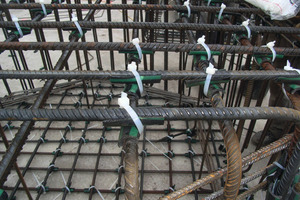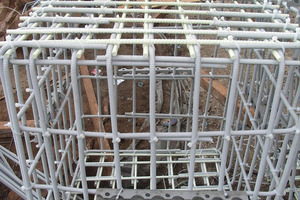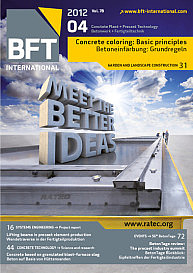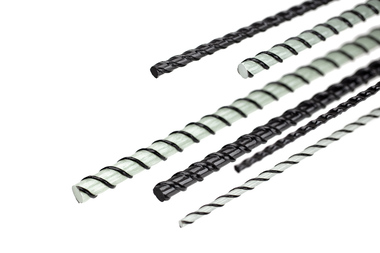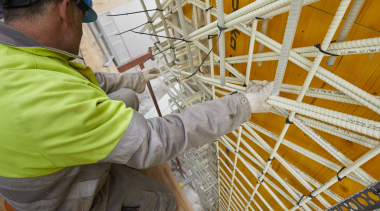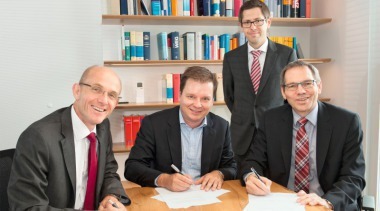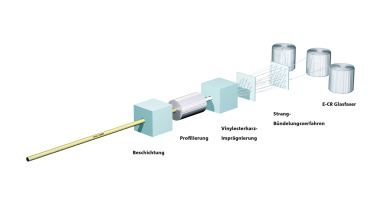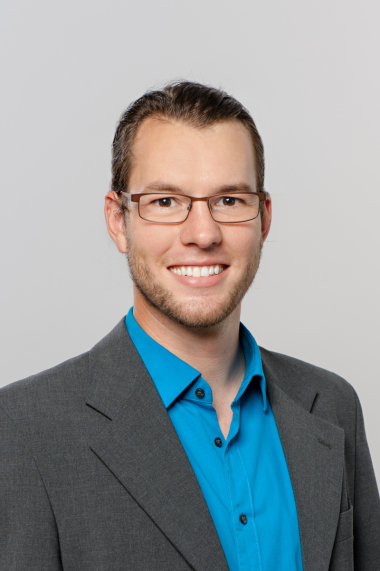Glass fiber reinforcement in foundations of high-voltage power electronics
Power electronics parts such as compensation reactors, inverters and bus bars are basic components of today’s modern infrastructure used for generating, transmitting and consuming electricity. All these components have one feature in common: they generate strong magnetic fields around them in the presence of high voltage. In turn, these magnetic fields generate stray currents in the steel reinforcement embedded in the concrete foundations of the systems, and thus massively heat up the foundations. This process severely compromises the bond between the steel and the concrete, which results in a long-lasting deleterious effect on the strength of the foundation.
Damage to the concrete foundation
The stray current phenomenon occurs as a result of the well-known effect of induction. This physical effect causes any current flowing in an electrical conductor to form a concentric magnetic field around this conductor. Two aspects reinforce this effect by many times its initial intensity: high voltages and amperages of the flowing current but also the fact that the electrical conductor forms a coil with many windings inside the above-mentioned components. A problem arises whenever other conductive materials are located within the magnetic field. The magnetic field excites the electrons in such materials, which results in an additional current flow.
In high-voltage power electronics systems, the inductive effect mainly affects the steel reinforcement embedded in concrete foundations. The power electronics components are placed directly on the foundations, which is why the latter are located within the direct reach of the magnetic fields. This is where two key effects occur simultaneously that favor current flow in the steel: first, the physical characteristics of reinforcing and stainless steel; second, the grid pattern normally used for rebar insertion, which creates electrical conductor loops as a result of the contact between the longitudinal and the transverse bars.
Avoiding induction currents
In these loops, the currents induced by the magnetic field can flow against a low resistance, and heat up the reinforcing steel in this process. The rebar temperature can be as high as 400°C at extremely high voltages and amperages, such as those applied in transformer stations or smelters. The resulting expansion of the rebar volume weakens the bond between the steel and the concrete and cracks open the concrete cover. The concrete cracks formed in this process provide space for water to penetrate, which causes rebar corrosion. As a result, the required load-bearing strength of the foundation is significantly compromised.
Glass fiber reinforcement
– a tried and tested solution
Glass fiber reinforcement provides an alternative to the usual steel reinforcement. Schöck, the component manufacturer located in Baden-Baden, Germany, has successfully completed many high-voltage projects using the Schöck ComBAR glass fiber reinforcement. This material was inserted in relatively small foundations for compensation reactors and inverter systems in German steel mills but also in large foundations of 1,000 m2 or more for aluminum smelters in Iceland, Saudi Arabia and Qatar. As a result, the problem of induction currents in the foundation reinforcement was resolved permanently. The glass fiber bars provide the same handling properties, bond characteristics and load-bearing capacity as reinforcing steel whilst achieving an even higher performance in terms of strength and durability. Due to the absence of ferromagnetic materials, glass fiber bars are neither electrical conductors, nor can they be magnetized. In addition, the material is insensitive to corrosion and chemical attack.

